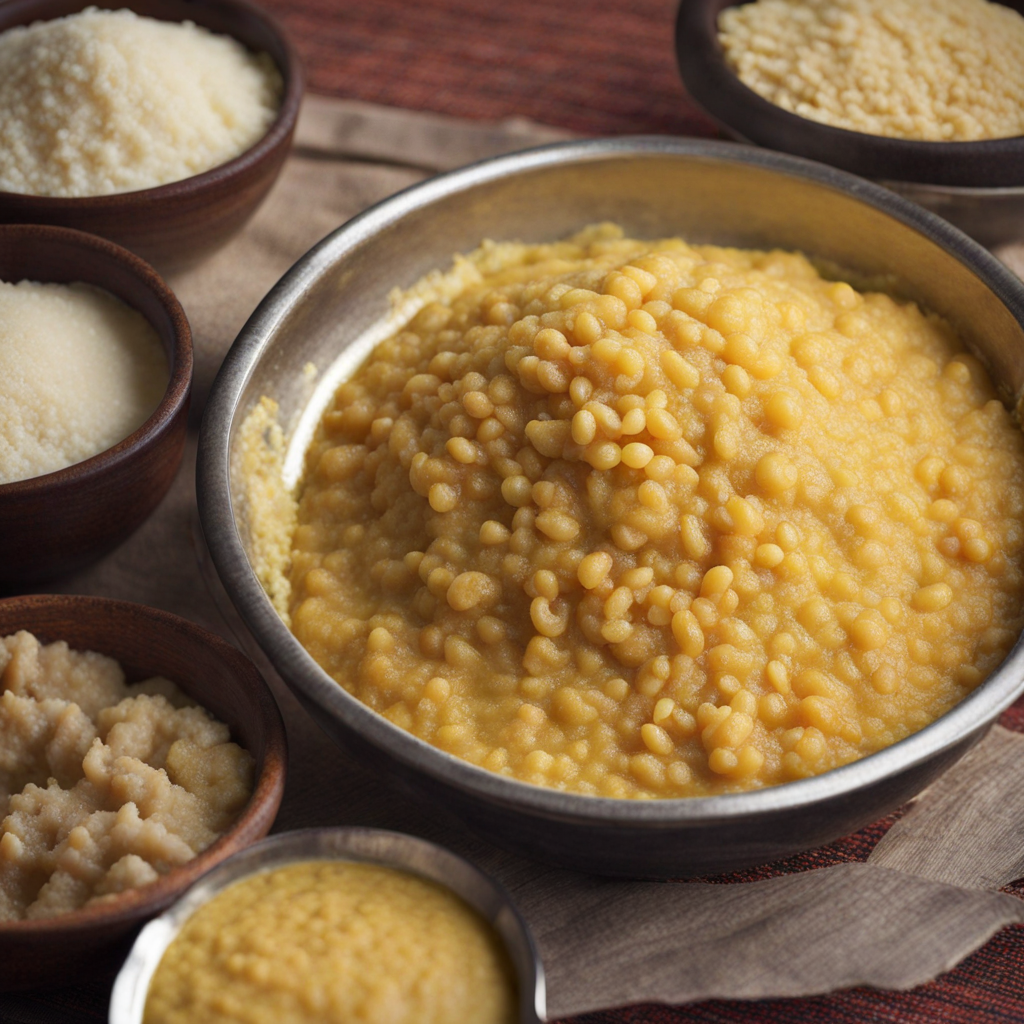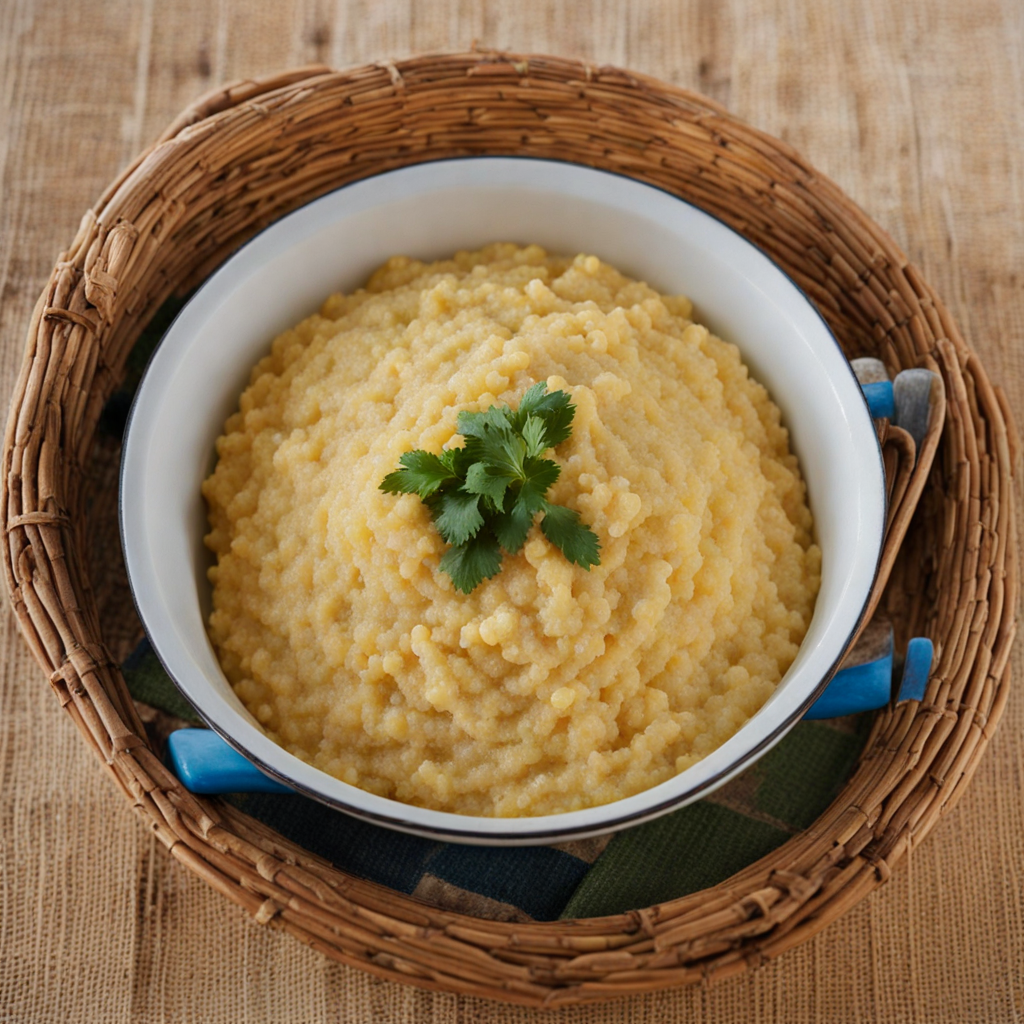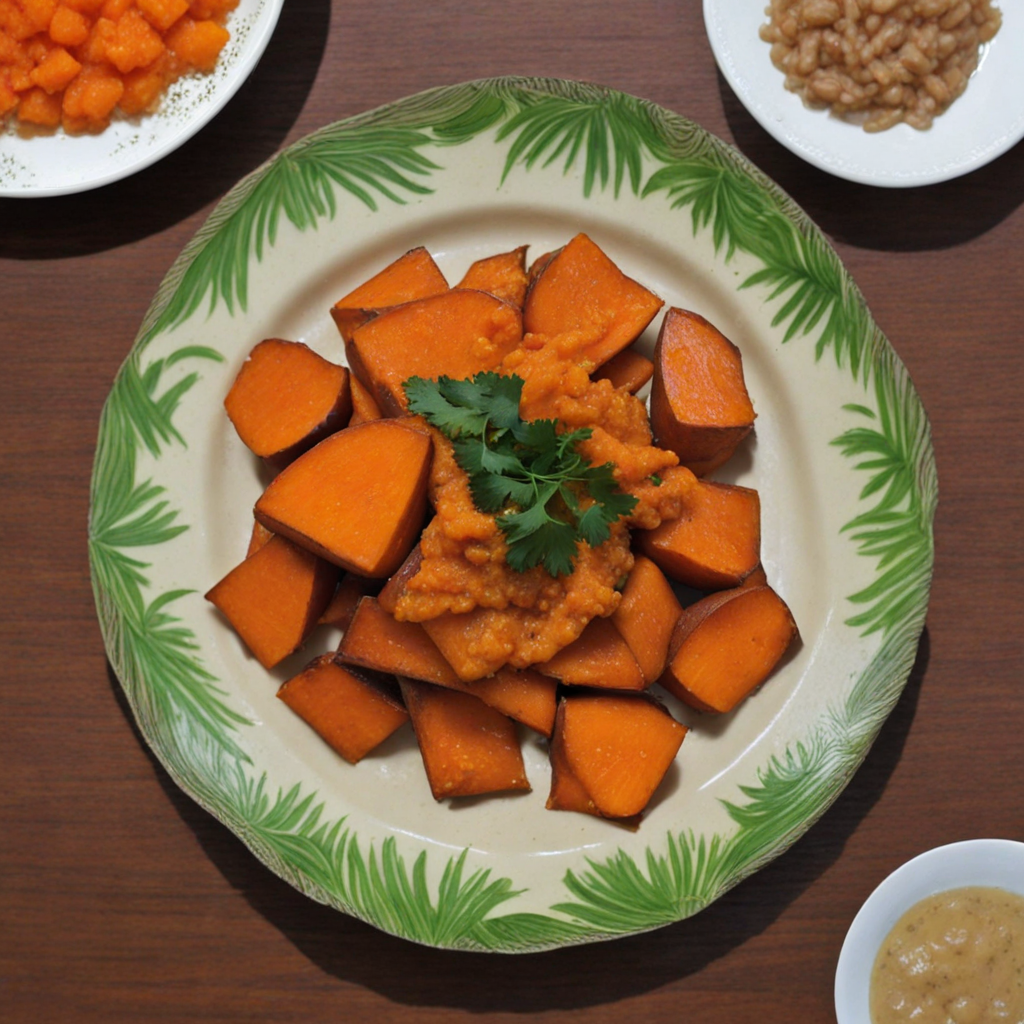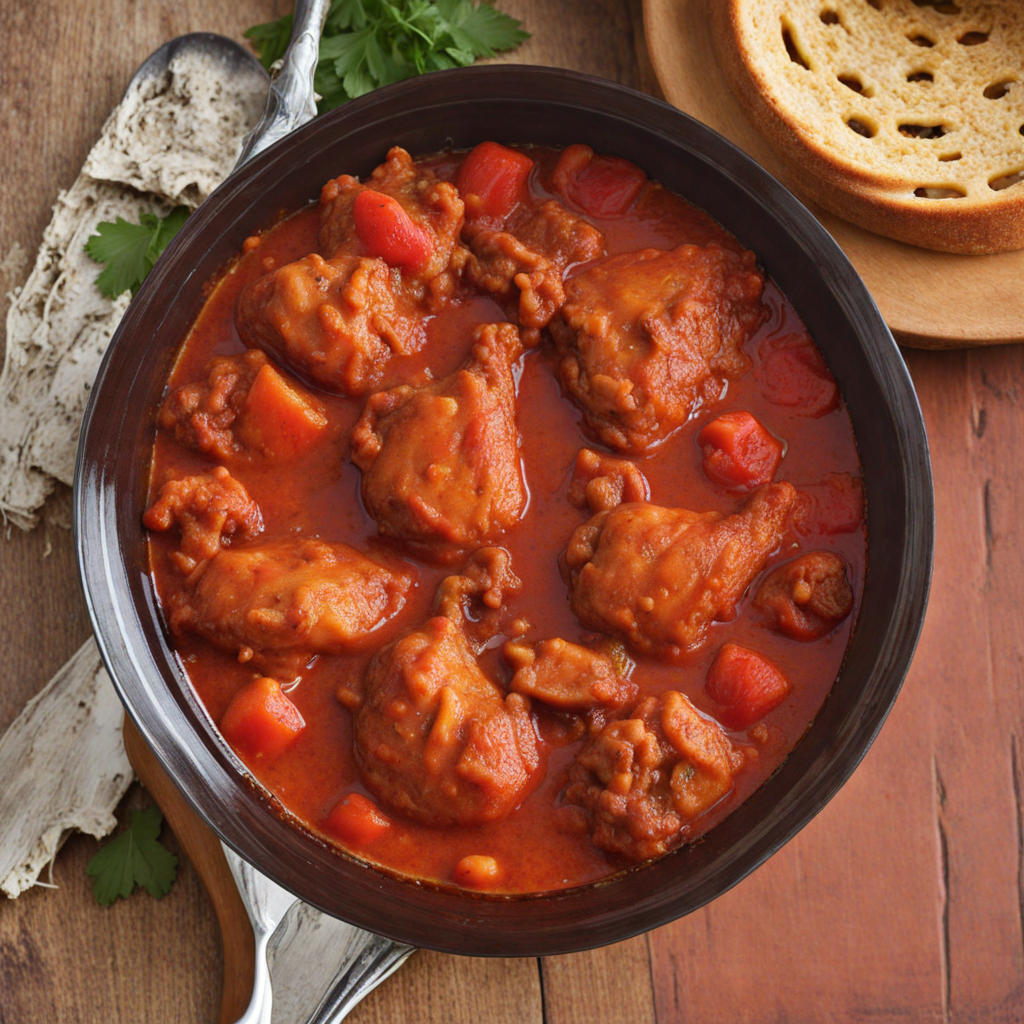Nsima
Nsima is a traditional staple food from Malawi, made primarily from maize flour (cornmeal) and water. The process of preparing nsima involves mixing the flour with boiling water, stirring continuously until it thickens into a smooth, dough-like consistency. This simple yet hearty dish serves as a perfect accompaniment to a variety of local dishes, making it a versatile base for many meals. The texture is dense and somewhat sticky, which allows it to be easily molded into balls or patties, perfect for scooping up flavorful stews and relishes. Although nsima may seem plain at first glance, its true magic lies in its ability to complement and enhance the flavors of the dishes it is served with. Typically enjoyed with relishes made from vegetables, fish, or meat, nsima absorbs the rich spices and sauces, creating a delightful harmony of tastes. The combination of nsima with local ingredients like chambo (fish) or a variety of greens provides a balanced meal that is both satisfying and nourishing. In Malawi, nsima is more than just food; it holds cultural significance and represents community and togetherness. It is often shared during family gatherings or celebrations, and the act of eating nsima is a communal experience, with everyone enjoying the meal together. For those seeking to discover new flavors, nsima offers a unique opportunity to explore the essence of Malawian cuisine while experiencing the warmth and hospitality of its people.
How It Became This Dish
The Rich History of Nsima: Malawi’s Staple Food Nsima, a traditional dish made primarily from maize (corn), is a staple food in Malawi and plays a central role in the cultural and social fabric of the nation. Its origins, significance, and evolution offer a fascinating glimpse into the agricultural practices, culinary traditions, and social customs of the Malawian people. #### Origins of Nsima The history of nsima can be traced back to the introduction of maize in Africa during the Columbian Exchange in the late 15th century. Originally cultivated by the indigenous peoples of the Americas, maize was brought to the African continent by European colonists. In Malawi, the crop adapted remarkably well to the local climate and soil, quickly becoming a staple food for the population. Before the widespread adoption of maize, the Malawian diet was heavily reliant on traditional grains like millet and sorghum. The arrival of maize transformed local agriculture and cuisine, as it provided a higher yield and became easier to cultivate and process. By the 19th century, maize had firmly established itself as the primary crop in Malawi, leading to the development of nsima as a significant food source. #### Cultural Significance of Nsima Nsima is not merely a dish; it embodies the spirit of Malawian culture and community. It is often served as the centerpiece of meals and is typically accompanied by various side dishes, including vegetables, fish, or meat, depending on availability. The preparation and consumption of nsima are deeply intertwined with social customs and gatherings, marking important events such as family reunions, weddings, and funerals. The act of eating nsima is a communal experience. Traditionally, families gather around a single plate, sharing the dish from a communal bowl. This practice fosters a sense of unity and togetherness, reinforcing familial and societal bonds. In many households, nsima is consumed using the hands, a practice that emphasizes the tactile and personal connection to food. Additionally, nsima has significant cultural implications in terms of identity and heritage. For many Malawians, it represents resilience and sustenance, symbolizing the labor and effort that goes into growing, harvesting, and preparing food. It is not uncommon for children to learn the art of making nsima from their mothers or grandmothers, passing down culinary knowledge and traditions through generations. #### The Preparation of Nsima The preparation of nsima is an art form in itself, requiring skill and intuition. The process begins with the selection of maize, which is typically dried and ground into flour. The flour is then mixed with water to create a thick porridge-like consistency. This mixture is cooked over a fire until it reaches the desired thickness, often stirred continuously with a wooden spoon to prevent lumps from forming. Nsima can vary in texture and flavor depending on the cooking method and the type of maize used. It can range from a soft, creamy consistency to a firmer, more solid form, known as "nsima ya mtedza," which is made from the flour of a specific variety of maize. The dish is commonly enjoyed hot and served immediately, as it is best consumed fresh. #### Development Over Time As Malawi has evolved, so too has the role of nsima within society. In the early years, nsima was primarily a rural dish consumed by subsistence farmers. However, as urbanization increased in the late 20th century, nsima became a symbol of national identity, transcending class and geographical barriers. It is now enjoyed across the country, from bustling cities like Lilongwe and Blantyre to rural villages. The introduction of modern agricultural techniques and hybrid maize varieties has also altered the landscape of nsima production. While traditional methods of cultivation and preparation remain prevalent, improvements in agricultural practices have led to increased maize yields. This has made nsima even more accessible to a broader segment of the population and has further entrenched it as a dietary staple. In recent years, globalization has introduced new culinary influences and variations of nsima. While traditional nsima remains beloved, modern Malawians are experimenting with new ingredients and flavors, incorporating spices, herbs, and other grains into the dish. This evolution reflects the dynamic nature of Malawian cuisine and its ability to adapt to changing tastes and influences. #### Nsima and Food Security Nsima also plays a crucial role in food security in Malawi. As the country faces challenges such as climate change, economic fluctuations, and population growth, maize continues to be a reliable source of nutrition for millions. The government and various organizations have emphasized the importance of maize cultivation and nsima consumption in combating hunger and malnutrition. Efforts to promote sustainable agricultural practices and diversify food sources have emerged, aiming to enhance the resilience of local communities. These initiatives often incorporate traditional knowledge and practices, ensuring that the cultural significance of nsima remains intact while addressing contemporary challenges. #### Conclusion Nsima is more than just a dish; it is a cultural cornerstone for the people of Malawi. Its history reflects the agricultural evolution of the region, the resilience of its people, and the communal bonds that it fosters. As Malawi continues to navigate the complexities of modernity and globalization, nsima remains a beloved staple that connects generations, celebrates heritage, and nourishes the body and soul. Whether enjoyed in a bustling urban setting or a quiet rural village, nsima serves as a reminder of the importance of food in shaping identity and community. It is a dish that embodies the essence of Malawian culture, a testament to its rich history, and a symbol of hope for a sustainable future.
You may like
Discover local flavors from Malawi







